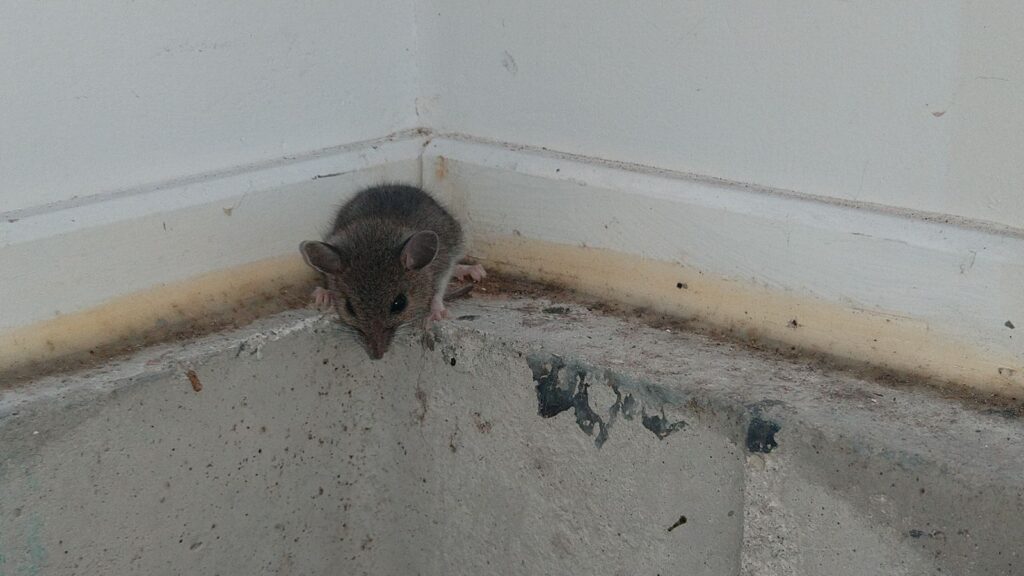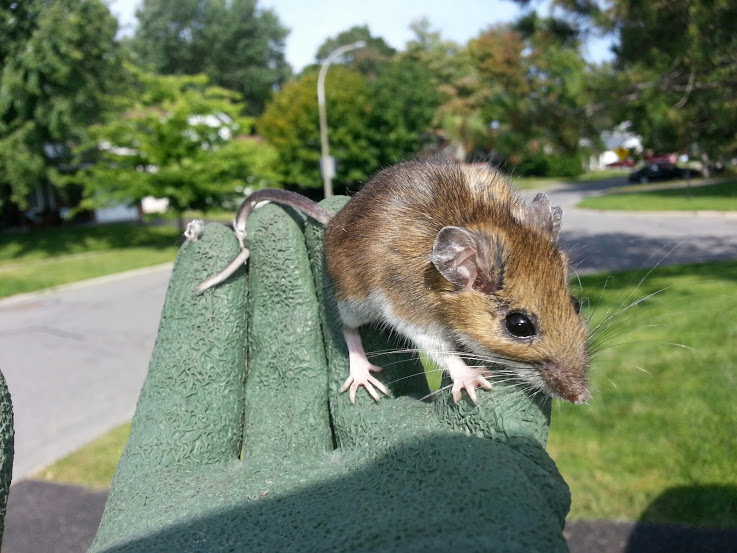As a homeowner, you’ve most likely been puzzled by the strange, often fascinating world of your tiny frequenters, the mice. The uncanny behaviors these creatures exhibit are but a small fragment of the wide and complex spectrum of mouse activities.
However, the intrigue is not merely for curiosity’s sake; understanding this world can be key to keeping your home in Maple Grove mouse-free. In this blog, we journey into the intriguing universe of mouse behaviors, discussing interesting facts and assessing the signs of a mouse infestation in your home.
Further on, you’ll find out about the proactive measures to hinder a mouse invasion and learn the multiple benefits of seeking professional assistance for wildlife removal. We’ll unveil how one renowned company can help in your quest to maintain a ‘no mouse zone’ in your abode.
An understanding of this creature’s behavior, activities, and features can contribute immensely to their effective management within our homes. This knowledge further aids in the detection and prevention of mouse infestations.
In addition, we’ll focus on insights into how Skedaddle, a leading wildlife control company, exhibits the right expertise to ensure your home is free from mice and any other pests. So, without further ado, let’s get into some interesting facts about these crafty little creatures.
What are the Complex Behaviors Exhibited by Mice?
Let’s get down to the nuts and bolts of mouse behavior. You might be surprised to learn how complex these diminutive creatures really are. Their behaviors, which are often characterized by their nocturnal nature and preference for subterranean homes, contribute significantly to their ability to thrive, even in less-than-ideal conditions.
Mus musculus, or the common house mouse, is especially adept at cohabitating with humans due to its complex adaptability features. From intricate nesting habits to their unique survival strategies, here is some essential knowledge you should have at your fingertips.
The Intricacy of Mouse Nesting Behavior
Understanding mouse nesting behavior is a good starting point in our exploration. Mice are skilled builders, creating elaborate nests for their offspring using available materials like plant matter, paper, and cloth. These nests, often tucked away in hidden, warm spaces, offer a safe haven for breeding and raising their pups.
Remarkable Survival Tactics
In addition to their construction skills, mice exhibit impressive survival tactics that speak volumes about their adaptability. They are known to hoard food in multiple locations, ensuring they have a steady supply in times of scarcity. Plus, mice are excellent climbers and jumpers, traits that allow them to access food and escape predators with relative ease.
Communication and Social Structure
Equally important in understanding the behavior of these animals is their communication and social structure. These tiny mammals utilize a complex system of vocalizations, scents, and body language to communicate. In their social hierarchy, dominant males often defend territories and resources. However, both males and females can show aggressive behavior when threatened or in need of resources.
The Curiosity Factor
Unlike some creatures that avoid new objects or environmental changes, mice are innately curious. This curiosity drives them to investigate new food sources or changes in their environment, assisting in their survival in various environments – including your home. This is one significant reason why mice removal can be tricky and warrants attention.
To sum up, the complex behaviors of mice, combined with their high rate of reproduction, allow them to create colonies quickly and adapt to a wide variety of environments – unfortunately, including our homes.
What are Some Interesting Facts About Mice?
It’s essential to understand that mice are more than just a common household pest. They are fascinating creatures with unique traits and habits that set them apart. Here are some interesting facts about them that might surprise you.
- Highly Adaptable: These rodents are found in nearly all corners of the world thanks to their remarkable ability to adapt to various environments. From scorching deserts to frigid tundra, they have evolved to survive in any climate.
- Agile Climbers: Believe it or not, they are excellent climbers, capable of scaling vertical walls and even traversing tightropes. Their balance and agility make them difficult to catch and exclude from your house.
- Fruitful Breeders: Their reproductive rate is simply astounding. Under favorable conditions, a single pair can produce as many as 100 offspring in a year. This rapid breeding contributes to their success as a species and their persistence as a pest.
- Vegetarian Diet: Despite common misconceptions, they aren’t always scavengers. They predominantly feed on plant material such as grains, fruits, and seeds. However, they can be opportunistic feeders and consume other foods when necessary.
- Nocturnal Lifestyle: Mice are primarily nocturnal, meaning they are most active during the night. This is why homeowners often hear them scurrying around in the attic or inside walls at night.
Understanding these facts can also be handy in recognizing and dealing with a potential mouse infestation in your home. It’s crucial to keep these pointers in mind when thinking of mice removal strategies, too.
What are the Signs of a Mouse Infestation in a Home?
Detecting a mouse infestation in your home might be more complicated than you initially think. These intelligent creatures have mastered the art of survival, which often involves staying out of sight. Nonetheless, some tell-tale signs can give them away. The earlier you identify these signs, the better you can manage to thwart the infestation.
Physical Signs of the Mouse
The first set of indicators comes in the form of physical signs. Mice are only somewhat tidy creatures, which works to your advantage. Seeing a mouse is the most obvious sign of infestation. They are typically most active at night, but an overcrowded nest may lead to daytime sightings. Here are a few more physical indicators:
- Droppings: Mouse droppings are tiny and pellet-like, usually found along baseboards, inside cupboards or anywhere they’ve run.
- Gnaw Marks: When mice are present, you’ll likely notice gnaw marks on various surfaces, particularly food packaging or the structure of your home.
- Nests: Mice build nests with soft and shredded materials. You might find these in secluded and isolated places, indicating a brooding family.
Unseen Indicators
Not all signs of a mouse infestation are physical. Some are hidden, requiring a certain level of intuition and awareness to uncover. These may include:
- Sounds: You may hear scratching noises at night when these creatures are most active, especially within the walls or ceilings.
- Odors: Mice leave a distinct, musky odor. If you notice a strong, unusual smell in an area of your house, it could indicate a lurking infestation.
- Unsettled Pets: Cats and dogs often become excited or perturbed in the presence of the creatures. Their unusual behavior may be a sign of mice lurking close by.
If you have any suspicions about a potential infestation, consider getting a professional to inspect your home. They are trained to identify these subtler unseen signs.
What are Effective Methods to Prevent an Infestation?
As you’ve come to understand, the world of mice is complex and fascinating. But when these critters take up residence in your home, their intricate behaviors become less charming and more problematic. Fear not, we have compiled some protective measures you can take to safeguard your home against an uninvited mouse infestation.
Seal all Entry Points
Mice have a remarkable ability to squeeze through the smallest of gaps. Did you know a mouse can fit through a hole as small as a dime? That’s why the first step in mouse-proofing your home is to identify and seal all potential entry points. This includes cracks in walls, gaps around pipes, and spaces under doors. A combination of steel wool and caulk often does the trick for smaller openings, as rodents can’t gnaw through these materials.
Keep Your Property Clean
Mice are attracted to places with ample food and nesting material. By keeping your property clean and free of debris, you can make your home less welcoming to these pests. This includes properly sealing food in containers, cleaning up after meals, disposing of garbage regularly, and removing potential nesting materials like cardboard boxes and paper from easy-to-reach areas.
Adopt a Cat
If you’re an animal lover, this prevention strategy is a win-win. Felines are natural predators of mice and their presence can deter mice from taking up residence in your home. However, remember that a pet is a long-term commitment and should be adopted for more than just their skills in mouse control.
Plant Natural Deterrents
Planting certain herbs and plants around your property that mice dislike can act as a natural deterrent. These include mint, lavender, and marigolds. However, this strategy is more supportive and should not be relied upon as the sole prevention method.
Despite your best attempts to prevent an infestation, mice can still find their way into your house. If you suspect you have a mouse infestation or if you want to take preventative measures to avoid future mouse problems, this is where wildlife removal comes into play. Stay tuned to find out how many benefits of hiring a professional removal service.

Why Skedaddle Humane Wildlife Control Is Your Best Bet
Understanding the world of mouse behaviors is key to handling a mouse infestation. However, that’s really just the start. You must be able to identify the signs, take appropriate preventative measures, and execute an effective removal plan. It’s a daunting task that requires time, knowledge, and resources.
That’s exactly where we come in. At Skedaddle Humane Wildlife Control, we have the expertise to not only tackle a mouse infestation but also to ensure it doesn’t happen again. We approach each case utilizing our knowledge of mouse nesting behavior and beneficial, humane removal methods. By choosing our service for mice removal in Maple Grove, you’re really investing in your peace of mind.
If your home in Maple Grove, near Minneapolis, has fallen victim to these resilient rodents, don’t hesitate to contact us. We’re eager to put our extensive experience and dedication to work for you. With Skedaddle’s comprehensive services, you will once again relish in a rodent-free environment!
Contact us today to request a quote and learn more about how we can protect your home from mice. Remember, understanding the facts about behavior is a crucial start, but removing an infestation requires professional assistance. Let us help you ensure the health of your home, one mouse at a time.



